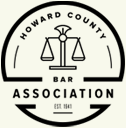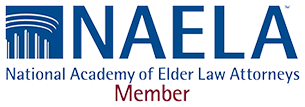New Eligibility Rules for VA Pension

On October 18, 2018, new rules regarding eligibility for VA pension were implemented by the Department of Veterans Affairs (VA). The new rules are quite comprehensive; however, they also provide more opportunities for veteran and surviving spouses to qualify for these important benefits.
3 Major Changes to Eligibility Rules for VA Pension
1. Lookback and penalty period
There is now a look-back period of 36 months when applying for needs-based VA pension benefits. Any asset that was transferred for less than fair market value during the 36-month period immediately preceding the VA pension application will result in a penalty period, not to exceed five years.
a. Exceptions. There are a few exceptions to the new transfer penalty rule. 1) No penalty will be assessed if the transfer was to a trust established for a child who was incapable of self-support prior to age 18. 2) There is no transfer penalty imposed if the claimant’s net worth would have been below the net worth limit already, regardless of the transfer. 3) A claimant will not be subject to a penalty period if the transfer was the result of fraud, misrepresentation, or unfair business practices related to the sale of financial products. 4) Only transfers that occur on or after October 18, 2018, will be subject to the lookback and transfer penalty rules.
b. Annuities may be penalized. If the annuity can be liquidated, then it is counted as an asset. If the annuity cannot be liquidated, then distributions from the annuity are considered income. If the annuity was purchased during the look-back period, then a penalty will be imposed.
c. Calculating the penalty period. The divisor used to calculate the penalty is the Maximum Annual Pension Rate in effect as of the VA pension application date, at the rate of the aid and attendance level for a Veteran with one dependent. In 2018 this number is $2,169, and is applicable to all claimants, regardless of marital status. The penalty period will be recalculated if all or part of the gifted money is returned (also referred to as a partial or total cure).
2. Net worth.
There is now a bright-line rule regarding the net worth of a Veteran. This amount is currently set at $123,600.00, which is also the maximum Community Spouse Resource Allowance amount allowed by Medicaid. This number will increase annually with the increase in Social Security benefits. If the Veteran or other claimant has net worth over the threshold and thus does not qualify for benefits, he or she can spend-down assets by purchasing goods or services for fair market value for any household relative.
- A homestead owned by the Veteran is not included in the net worth calculation. However, there is a two-acre limit imposed on the homestead. If the claimant’s homestead is over two acres, then other rules apply and the value of the property in excess of two acres may be included in the net worth calculation.
- The value of “personal effects suitable to and consistent with a reasonable mode of life” is not included in the asset calculation. This would include personal transportation vehicles and most household goods.
- The annual income of the claimant and certain dependents is included in the calculation of net worth. However, reasonable and predictable unreimbursed medical expenses can be deducted from income.
3. More medical expense deductions
The new rules provided an additional Activity of Daily Living (ADL) to include assistance with ambulating within the home. The rules also define Instrumental Activities of Daily Living (IADLs) and set out specific instances when expenses for care that include ADLs and IADLs may be deducted from income. The rules also specific when room and board at a care facility other than a nursing home may be deducted from income as a medical expense.
We are here to help.
If you have any questions about something you have read or would like additional information, please contact Andre O. McDonald, an accredited Veterans Administration attorney, at (443) 741-1088 to schedule a no obligation consultation to discuss whether you qualify for VA pension.
DISCLAIMER: THE INFORMATION POSTED ON THIS BLOG IS INTENDED FOR EDUCATIONAL PURPOSES ONLY AND IS NOT INTENDED TO CONVEY LEGAL OR TAX ADVICE.











